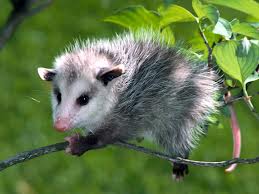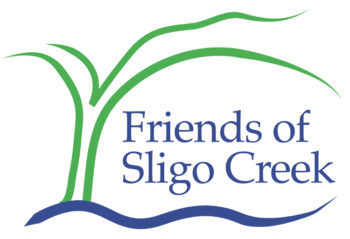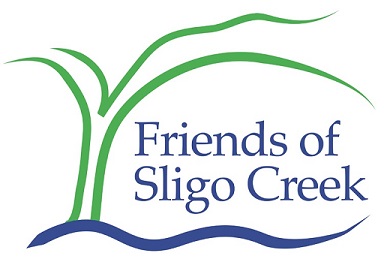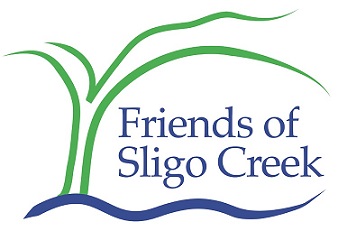The Virginia opossum (Didelphis virginiana), commonly known as the opossum, is the only marsupial native to North America.

The Virginia opossum (Didelphis virginiana), commonly known as the opossum, is the only marsupial native to North America. Opossums can be found in Sligo Creek Park.
When you think of the word “marsupial”, what do you think of? These words likely come to mind: mammal, females carrying young in a pouch, Australia, kangaroos, and koalas. You also could have thought of Sligo Creek Park!
The Virginia opossum (Didelphis virginiana), commonly known as the opossum, is the only marsupial native to North America. These nomadic omnivores are very adaptable; they can be found throughout Maryland and the eastern United States, as well as in a few states out west. Because they prefer deciduous trees near water, Sligo Creek Park provides good habitat. Opossums are primarily nocturnal, and I often observe these cat-sized animals in the trees surrounding Sligo Creek at dusk.
Opossums breed from January through July; approximately 13 days after mating, the female gives birth to young the size of honeybees. The babies live in mom’s pouch and nurse for approximately two months. This means, if you observe a female opossum within the next few months, she likely has growing babies in her pouch.
I bet that you’ve heard the saying “playing possum”, but do you know why opossums “play dead”? opossums are not aggressive and have many predators, including owls, hawks, humans, and domestic dogs and cats. Although opossums may try to scare a predator by hissing, they evolved to involuntarily react to predators by falling onto the ground and lying motionless. Most of their predators prefer to not eat an animal that is already dead, so the “playing dead” opossum hopes to awaken unharmed when the predator passes.
Please keep “playing possum” in mind the next time you see an opossum lying motionless on Sligo Creek Parkway and other local roads; she or he may be trying to trick you. In addition to “playing dead” in the street, many opossums are hit by cars because of their poor hearing and eyesight. If you see an opossum that was recently hit on the road, please call a licensed wildlife rehabilitator (www.mwra.org/pages/referral-directory.php). The rehabilitator may be able to tell you if the adult and/or the babies in the pouch could be saved. See the attached photos of baby opossums being rehabilitated in the Wildlife Clinic at the Tufts University Cummings School of Veterinary Medicine.
If you have observed an opossum in Sligo Creek Park, please let us know by responding to this article. If you remember the time of year and/or location or have a photo to share, even better. In addition, you can report opossums you have seen around Sligo Creek on the “Sightings” page of the Friends of Sligo Creek website. There has not been an opossum sighting posted on our website for months, so if you observe one, please post!
Do you want to learn more about our native opossums? There is abundant information on the Maryland Department of Natural Resources website: www.dnr.state.md.us/wildlife/Plants_Wildlife/Opossum.asp and the Chesapeake Bay Program website: www.chesapeakebay.net/fieldguide/critter/virginia_opossum.
Corinne Lackner Stephens is a member of the Friends of Sligo Creek Stormwater Committee and the Certification Manager/Biologist for the Wildlife Habitat Council in Silver Spring, MD.


